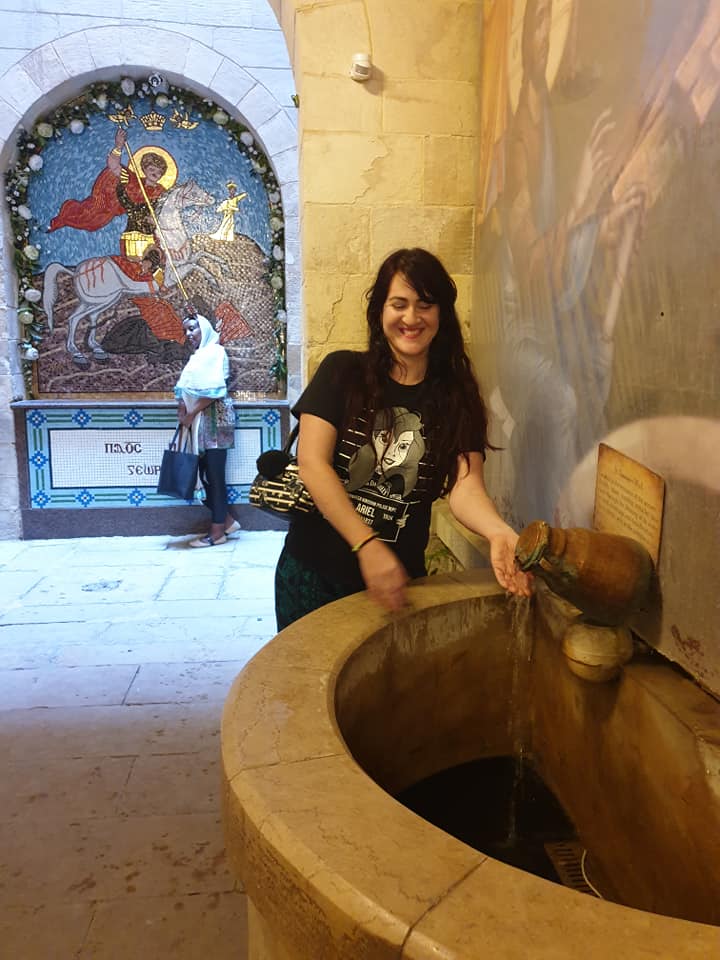
The day the tour spent in Luxor was one of the days I was most looking forward to since we were going to the Valley of the Kings. New Kingdom pharaohs had their tombs cut into the rock there (Luxor was called Thebes before). I believe over sixty tombs have been discovered. Unfortunately, most of the tombs were robbed long ago, with a major exception being King Tut’s tomb, which was discovered much later. Your entrance fee comes with admission to three different tombs. We were able to purchase optional excursions to go to King Tutankhamun’s (or Tut’s) tomb, as well as Ramses VI’s (which was amazing!). Ramses VI’s is the most beautiful tomb, since much of the paint was been preserved and the colors are vibrant and striking. His tomb is pretty large with a winding stairway that leads you into the tomb. The tomb was started by Ramses V and then completed by Ramses VI. The paintings in the tomb are well preserved, and emphasize astronomical scenes, and images from the Books of Day, Night, and the Heavens (respectively).
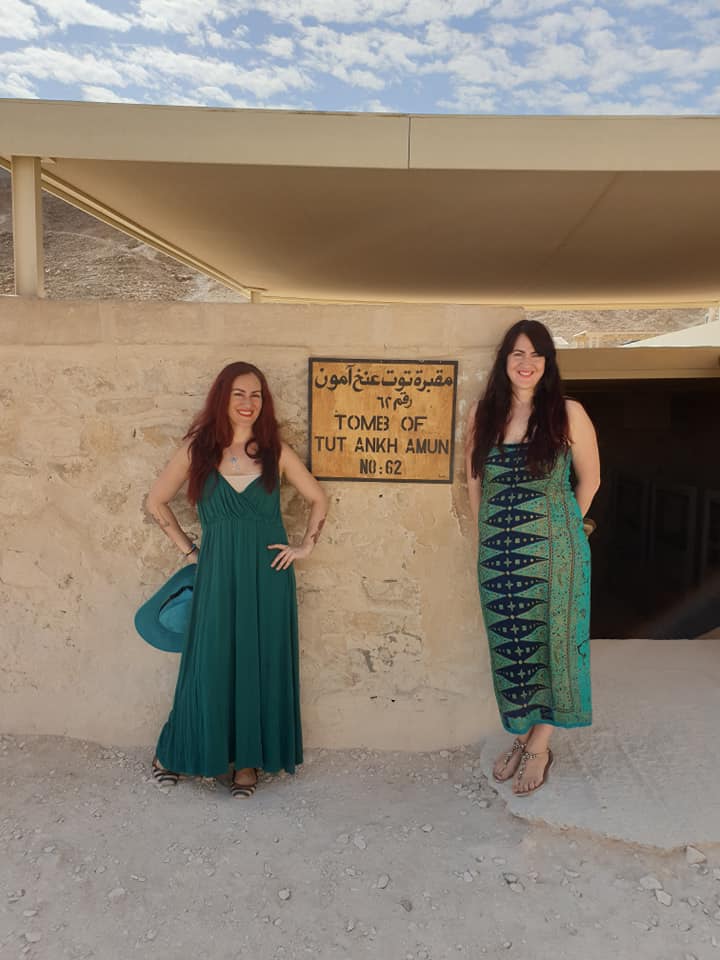

You can also go to King Tut’s tomb, which I still recommend seeing since his mummy is there and the frescoes are also well preserved. The tomb is much smaller, but was hidden from grave robbers (though it was still opened after being sealed). It was discovered in 1922 by Howard Carter and the contents are at the Egyptian Museum in Cairo. The murals show Tut meting Osiris and Nut in the afterlife. Another painting shows mourners carrying Tut to his tomb. There is also a painting where Tut is surrounded by Anubis and Hathor, both holding Ankhs. The colors are also quite vibrant and beautiful. Plus no visit to Egypt is complete without visiting Tut’s tomb, so it is an optional definitely worth taking.


One of my bucket list items was to see the Temple of Hatshepsut, a female pharaoh’s mortuary who reigned in the eighteenth dynasty. It is close to the Valley of Kings, and located beneath the cliffs of Deir-el-Bahari. Her temple is dedicated to the god Amun. Hatshepsut’s temple is unlike any ancient Egyptian structure, and resembles a more classical style with its colonnaded terraces. The sculptures in the temple tell the story of her divine right to rule as pharaoh, since she was a woman, Hatshepsut had to justify her reign. Sadly, many of her sculptures were destroyed by her stepson Thutmose III after she died since she prevented him from ruling. There used to be an Avenue of Sphinxes that led to the temple, but there is just one sphinx of Hatshepsut left. The temple is also aligned to the winter solstice, which highlights various elements like the statue of Osiris (I’m sure it is busy there during this event). The temple is breathtaking and a must visit site if you are in Luxor!
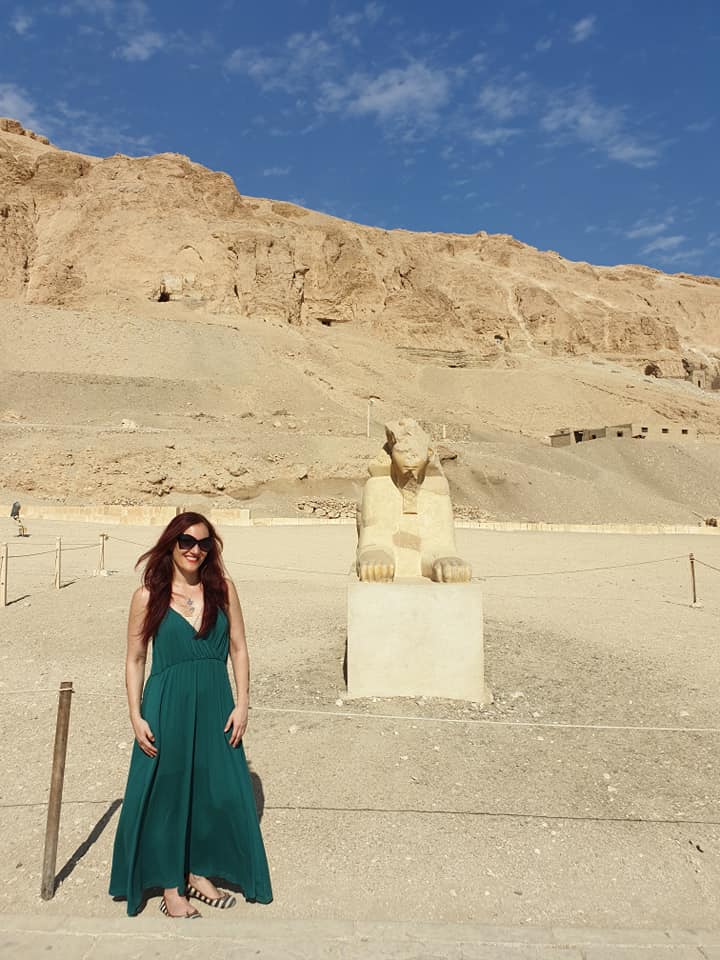
Hatshepsut herself was the second woman to become pharaoh. Hatshepsut was the daughter, sister, and wife of a king. She married Thutmose II, and after carrying a daughter, could have no more children. It is believed that she ruled over twenty years as pharaoh, and is considered to be the first great female rulers. She had a prosperous and successful reign with a long era of peace. Ever since I read about her in high school, I have wanted to visit her temple, and am grateful to have had this experience.
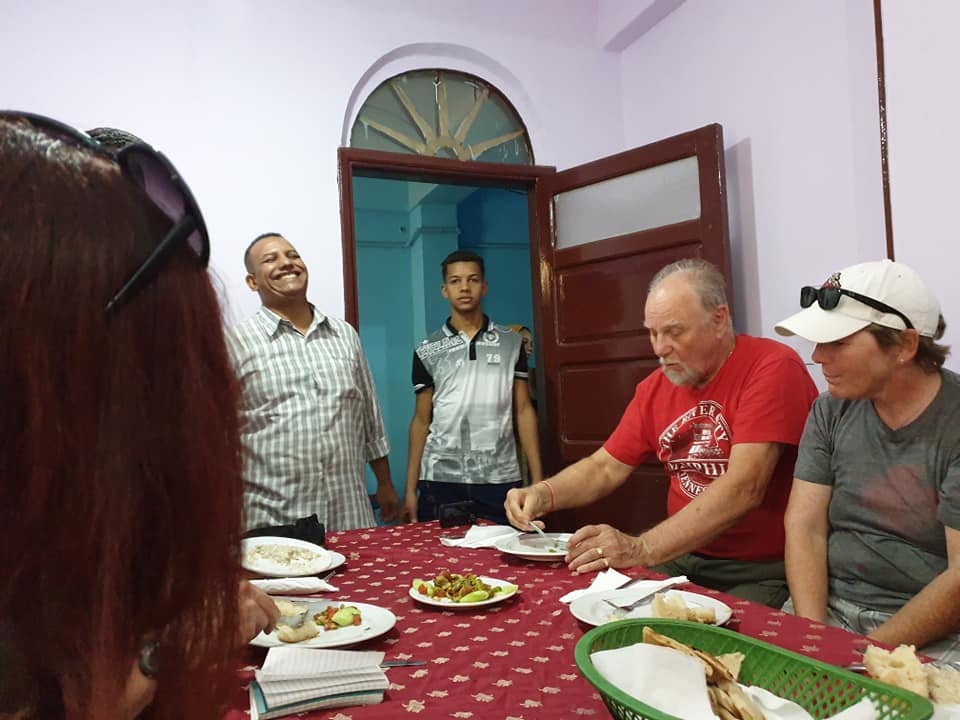
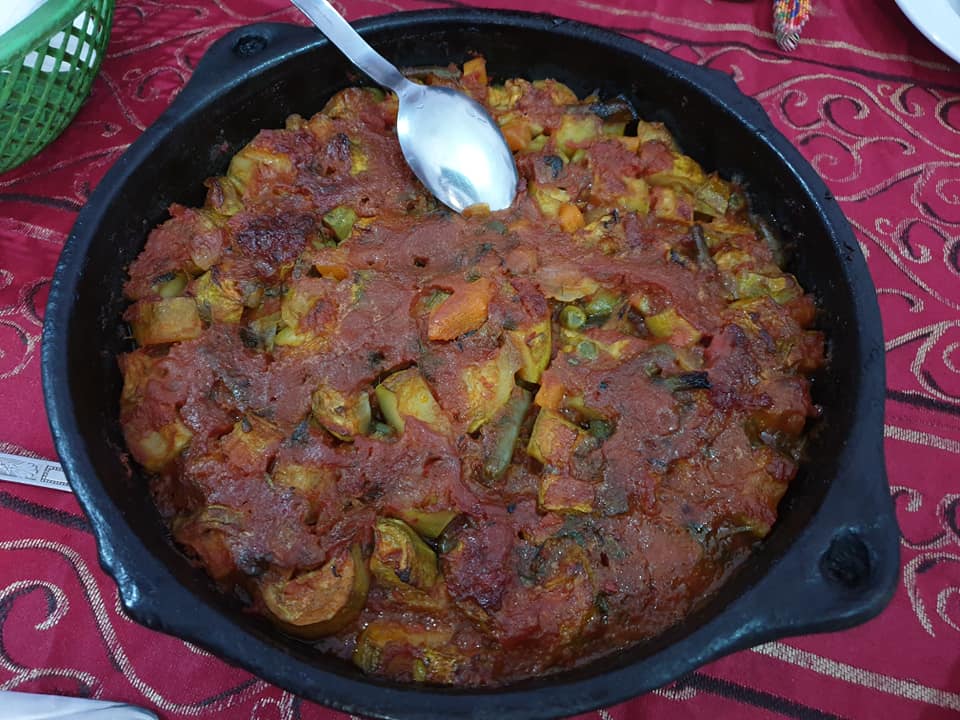
Following the temple, we stopped at the Colossi of Memnon, two massive statues of Amenhotep III, which are not in great shape. The pharaoh’s temple was there, and little remains of it. The stop was brief and then we were on our way. After that we had lunch with a local family again. Our host was a teacher, and his wife made us a delicious meal. I really enjoyed the babaganoush, fried eggplant, and mixed veggies. We got back to our resort later in the afternoon, so we sat by the pool and decompressed by reading. Later, my sister and I had some wine at the roof top bar, with a beautiful view of the sun setting on the Nile. Such an amazing day!

The next day it was off to the Temple of Karnak, which is a massive complex of temples and buildings in Luxor. Construction began in the Middle Kingdom and went all the way into the Ptolemaic era; around thirty different pharaohs contributed to this religious complex. Karnak was the center of religious life in Ancient Egypt, and part of the city of Thebes back then. The Great Hypostyle Hall is one of the most beautiful parts of the temple, which was built during Queen Hatshepsut’s reign. It is over 50,000 square feet and has 134 columns. Our guide gave us a couple hours to explore after taking us around. The Temple of Karnak is a massive structure and absolutely beautiful, and I believe it is one of the most visited sites in Egypt.
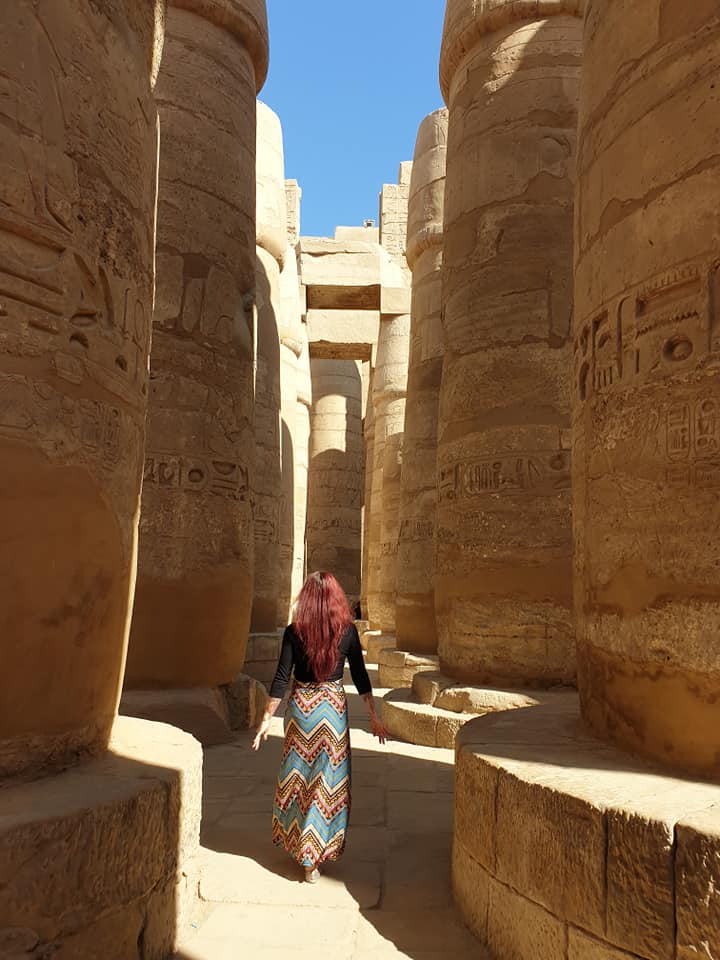
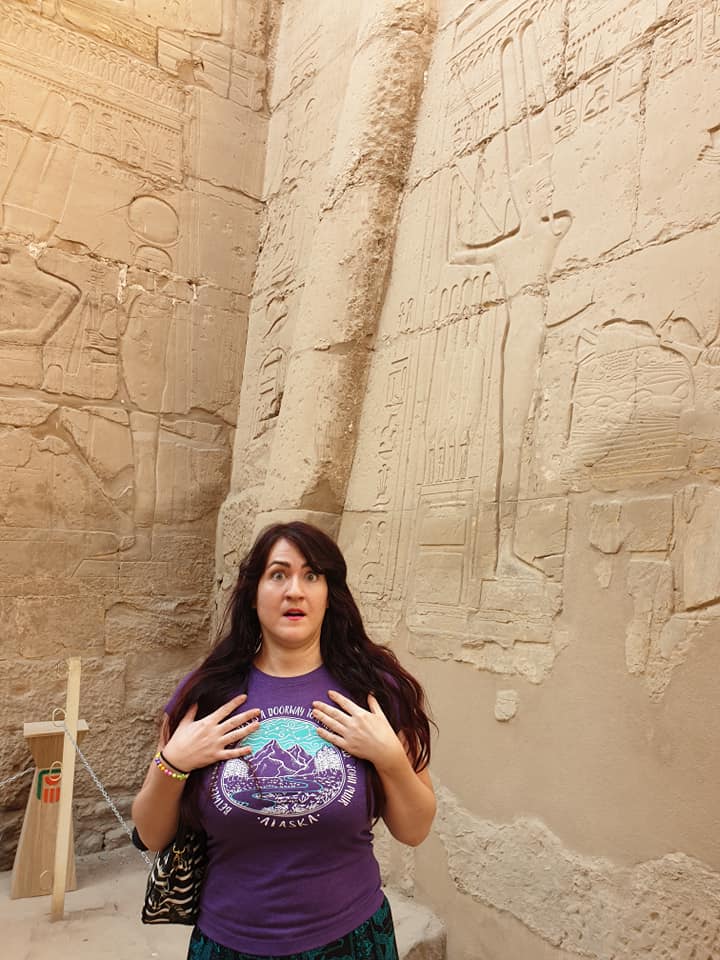
The next stop was the Luxor Temple, which was constructed around 14000 BCE, and is dedicated to kingship; some believe that is where the pharaohs were crowned. The temple has colossal statues of Ramses II at the front gate. There is a processional colonnade of Amenhotep III, and sun court dedicated to him as well. There is also an avenue of sphinxes there that would have connected Karnak to Luxor long ago. This temple is also worth checking out when in Luxor.

Later that day we enjoyed a delicious meal at a restaurant in downtown Luxor. I tried a camel burger, which was surprisingly good, and had my favorite beverage in Egypt, mint lemonade. Our guide Mike bought the group some handmade camels as a good bye gift, and for being a great group. I thought this was very sweet, and have my camel displayed in order to remind me of the trip. After our delicious meal, we went back to the hotel to relax by the pool, and then have a glass of wine at the rooftop bar again.

The next day we were up early to go through airport security shenanigans once again to fly back to Cairo. Our guide actually saved us from being taken by security to have our stuff searched. That is why I recommend taking a tour; you have someone that is local and speaks the language to look out for you. As a woman you are also incredibly vulnerable in a country where women don’t have many rights. It was a short flight back to Cairo, but took up most of the morning. The group offered an optional excursion to see the earliest pyramids in Memphis and Saqqara, but it was pretty expensive and the group only had time to have a quick, light lunch. Since we barely had breakfast, my sister and I wanted a more substantial meal, and to have an easier pace since it was our last day in the country.
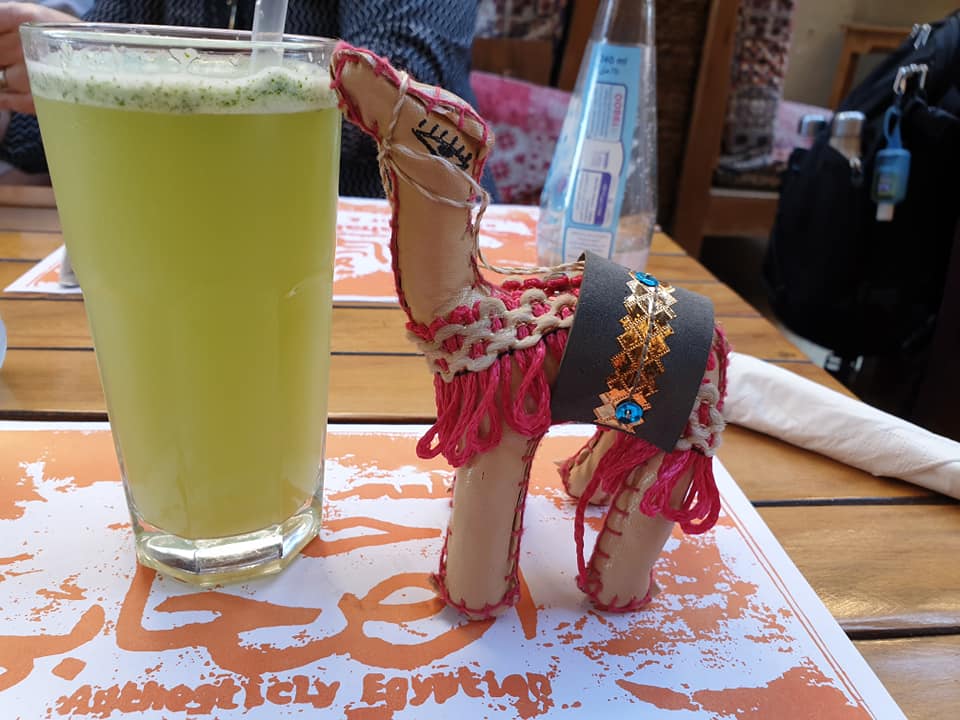
We had lunch back at the Hotel Mercure where we originally stayed at in Cairo, and ended up hiring a driver to take us to Coptic Cairo in order to see some of the oldest churches in the world. In order to enter the area, you have to go through a metal detector and have your bags scanned. Our driver didn’t enter, but told us to meet him at the front at a specific time. The Hanging Church is one of the most famous churches, which was built in the 3rd or 4th centuries. There are some beautiful mosaics in the courtyard. The holy family allegedly stayed in the area when fleeing Herod, and you can visit the site where churches were built in commemoration: Saints Sergius and Bacchus Churches. The Ben Ezra Synagogue is also in the area, which was built in the 12th century. St. George’s Church is quite beautiful as well. You can wash your hands at St. George’s well where the blessing of the water led to miracles. Since all the churches are close, you can easily visit them all. There is also a Coptic Museum, which has some important artwork from the church. The churches are beautiful and worth seeing, but since my sister and I were alone, we felt vulnerable since we would be followed when walking (I had a boy touch my back when I was taking a picture in a church) so we dedicated to go back to the hotel, and relax the rest of the day.

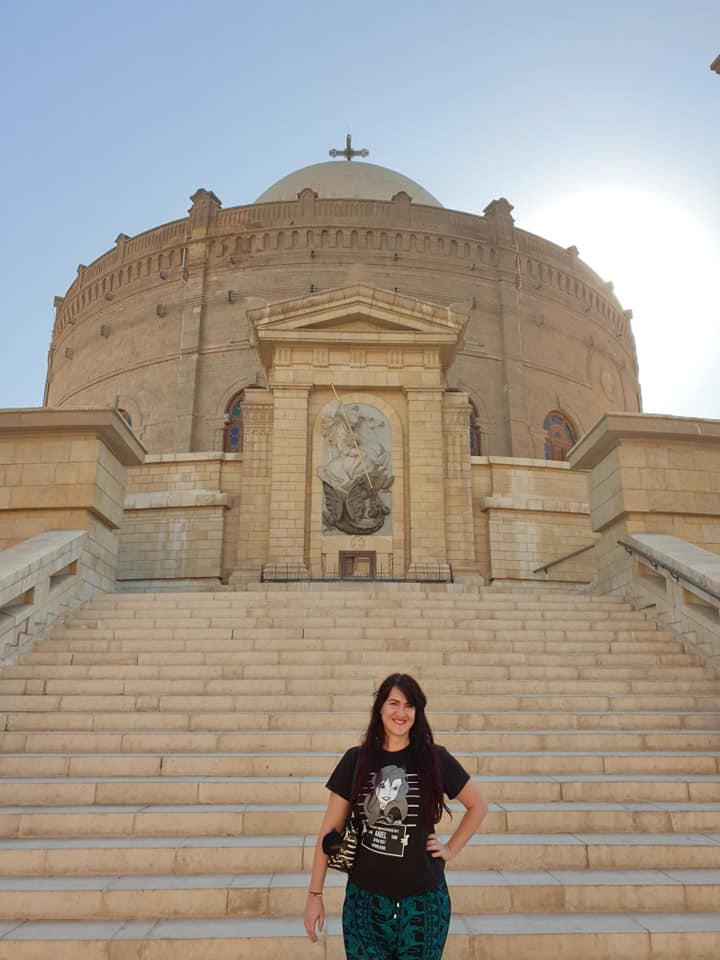
We had dinner with our group at the hotel, and said farewell to everyone. We thanked our amazing guide Mike for looking out and taking care of us all during the trip. We had a very early flight to Amman, Jordan the next day. We scheduled a cab to pick us up at 3:30am to take us to the airport (we were stopped by police, but thankfully let go to continue on to the airport). Thankfully, the airport was uneventful and we were able to fly out of the country with no issues.
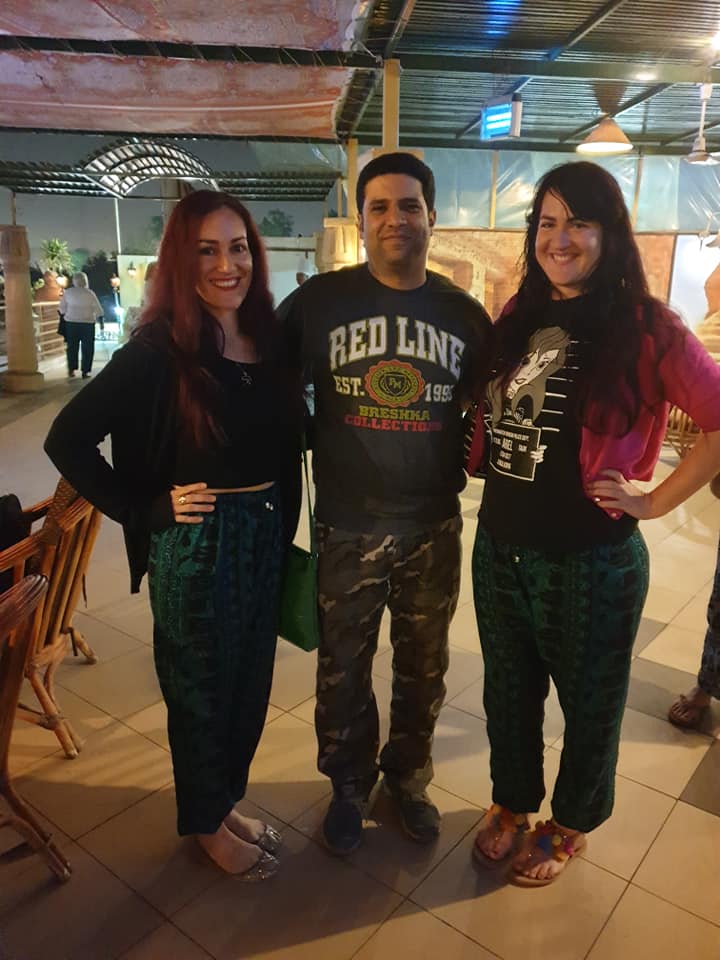
I had an amazing time in Egypt with G Adventures, and really liked our group (the fact that it was small was great). I was happy to leave Egypt since it is a difficult place to be a woman, and you have to go everywhere with a male escort if you are not wearing a headscarf and very conservative clothes. The trip really opened my eyes, and gave me a deep sense of gratitude for my circumstances. Egypt has always been a bucket list place for me to visit due to my love of ancient Egyptian culture so I am glad to have accomplished that goal.
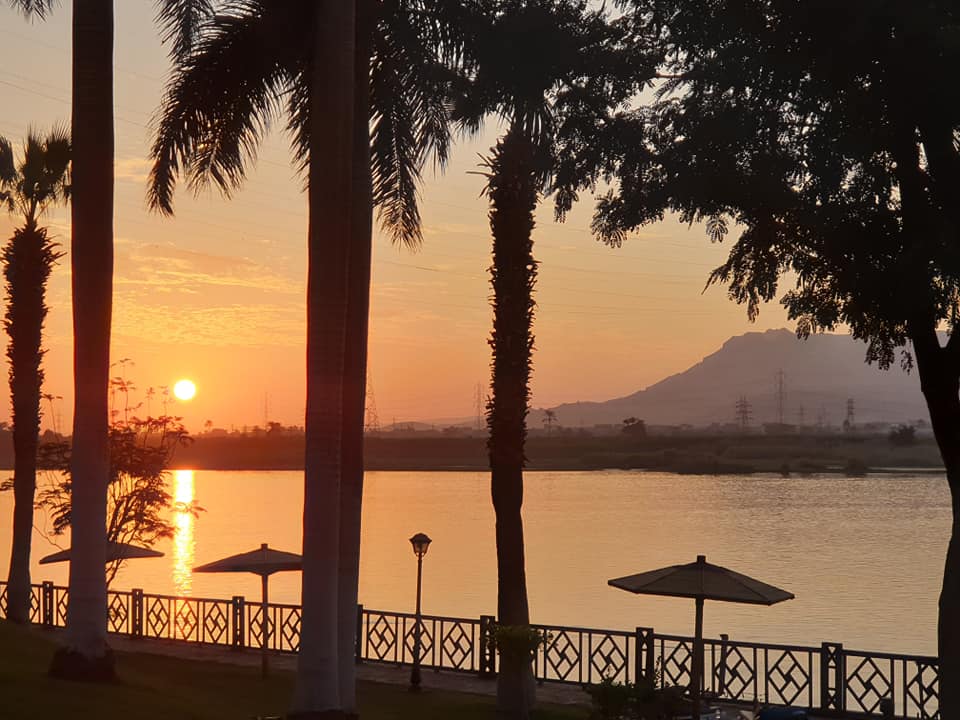
My next post will be about our time in Jordan, which is the last part of our trip; so stay tuned for more exciting adventures! Also, let me know if you have any suggestions. If you like my Facebook page, there are videos from the trip posted that you can check out as well. I also update the Instagram WayfaringGal page (which has more photos from the trip) with new posts. Thank you for reading, and comments and feedback are always welcome since that is how we learn and grow.
